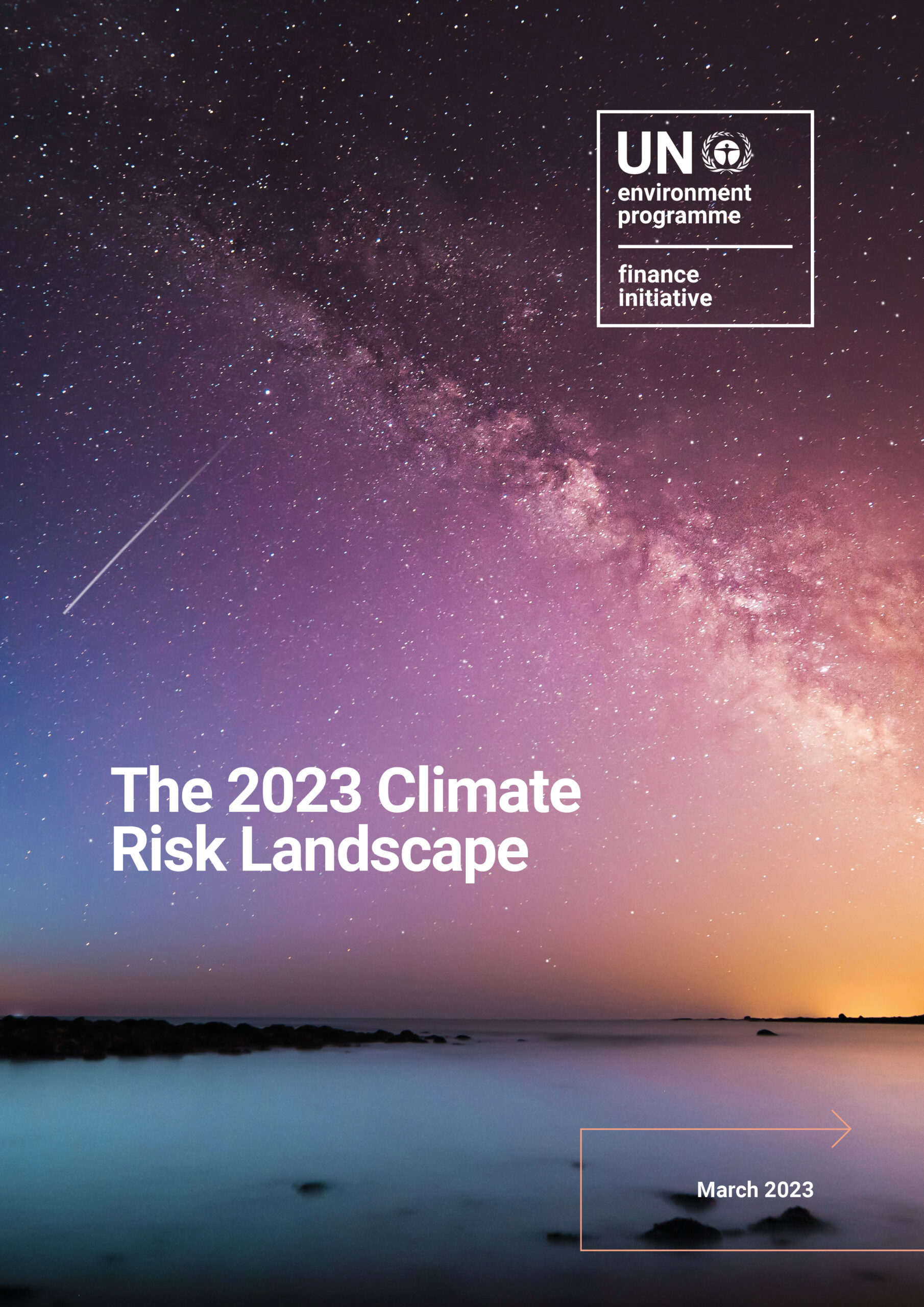The Portfolio Carbon Initiative – a collaboration between World Resources Institute (WRI), UNEP Finance Initiative and 2 Degrees Investing Initiative – have published Exploring Metrics to Measure the Climate Progress of Banks to provide insight into which metrics banks can use to report on the extent to which their activities help or hinder the transition toward a low-carbon economy. In their blog, Cynthia Cummis, of the World Resources Institute, Remco Fischer of UNEP FI and Jakob Thomä from 2 Degrees Investing Initiative explain more.
Banks are connected to every part of the economy through their investing and lending activities. That means they play a crucial role in financing the transition to a low-carbon economy.
The financial sector is increasingly aware of the need to shift capital flows away from companies and activities that contribute to the climate problem and into climate solutions. However, they are just getting started in thinking through and strategizing on how best to respond — and tracking the climate progress of financial institutions has proven notoriously challenging.
Are banks moving their financing in the right direction? It’s a very tough question to answer.
Our analysis of 35 large development and commercial banks found that, by and large, banks are unable to convey their overall climate progress. Many that report on climate-friendly “green” investments, for instance, do not fill in the other half of the picture by also reporting on financing of activities and technologies that contribute significantly to GHG emissions, known as “brown” investments.
Until we know a financial institution’s contribution to the climate problem as well as their contribution to the climate solution, claims of climate progress can only be assessed as incomplete.
Several Trends Push Banks to Low-Carbon Economy
Banks—like any other financial institutions and businesses—are interested in taking advantage of the new business opportunities afforded by the low-carbon transition, through financing of sectors such as sustainable transportation and renewable energy. The world needs an additional $1 trillion per year, on average, investment in clean energy through 2050 in order to limit global temperature rise to no more than 2 degrees Celsius.
Financial regulators are also increasingly concerned about risks to the financial system posed by climate-related threats. The Financial Stability Board’s recommendations for effective disclosure of climate-related financial risks and opportunities is ushering in a new phase in norms and expectations around the issue of financial institutions’ climate-related disclosure. In response, some financial institutions—including banks—are moving with speed and determination to understand, assess and disclose such climate-related risks, as shown by a recent UNEP FI-convened group of 16 banks piloting the recommendations and delivering the first publicly available methods for the industry to do so.
Measuring risk, however, is not enough. Understanding their contribution to international climate policy goals matters, too. Demand from investors and customers, concerns about reputation and a desire to become enablers of the low-carbon economy, are motivating banks to better understand, and be more transparent about, the climate progress of their lending and investment activities more broadly.
Some existing metrics are useful, but are bound by important limitations. For example, “financed emissions” accounting uses emissions as a metric to track portfolio level responsibility for GHG emissions. Assessing climate progress with financed emissions enables one metric to be used across asset classes and is a metric of interest to some stakeholders to understand overall exposure to emissions. On the other hand, this level of aggregation may provide fewer insights for internal decision-making than sector-specific metrics which cannot be aggregated across asset classes, such as measures of efficiency for real estate (kilowatt-hours per square foot) or vehicles (miles per gallon).
Banks Aren’t Transparent Yet About Investing in “Brown” Activities
The metrics most commonly used by banks to relate their contribution to climate change are exposure-based metrics such as counts, percentages and currency values.
Exposure-based metrics used to report on contributions to the climate solution are much more commonly reported than exposure-based metrics used to report on contributions to the climate problem.
Many banks have made commitments to finance climate solutions, known as “green” finance. For example, the Australia and New Zealand Banking Group stated in 2015 that it will fund and facilitate at least $10 billion by 2020 to support increased energy efficiency in industry, low-emissions transport, green buildings, reforestation, renewable energy and battery storage, emerging technologies (such as CCS) and climate change adaptation measures.
Conversely, a few banks are tracking and shedding their financing of climate problems, known as “brown” finance. For example, the World Bank announced it will stop financing oil and gas exploration and extraction from 2019.
The problem so far has been that banks focus their reporting almost exclusively on green financing, with limited reporting on brown financing. Without reporting the level of green activities in relation to the level of brown activities or providing green financing in the context of total portfolio values or in comparison to parallel values in the real economy, this information has limited usefulness to stakeholders.
Green and brown exposure metrics have some limitations; it can be difficult to find agreement on whether controversial technologies like natural gas, nuclear, CCS and biofuels are “green” or “brown.” However, if green and brown exposure were transparently reported by banks, it would improve the understanding of the financial sector’s climate progress.
Next Step: Science-Based Climate Action
There are several encouraging signs that banks are recognizing the enormous business opportunity created by the unprecedented capital needs of the low-carbon transition. Twenty-three financial institutions, including banks, have committed to set GHG emission reduction targets in line with the Paris Agreement through the Science Based Targets initiative, and an additional 70 companies in this sector reported to CDP in 2017 that they intend to set a science-based target within the next two years.
Some financial institutions are already taking concrete steps to improve their climate progress. In December 2017, the World Bank, ING and AXA announced plans to divest from fossil fuels including coal, oil, and gas. Earlier this year, Spain’s second largest bank BBVA committed to invest €100 billion ($119 billion) in climate projects by 2025 and cut its own carbon emissions by 68 percent.
To truly bring the climate fight to finance, however, requires developing science-based metrics and tools that allow financial institutions to set performance benchmarks in line with global climate goals. The Science Based Targets initiative is working to develop methods and guidance for financial institutions to set science-based climate targets for their investing and lending portfolios.
Despite evolving practices, banks should not wait to begin measuring and disclosing metrics on climate progress and tracking performance. Meaningful and practical metrics are available for numerous asset classes, and banks can improve their approach over time as more useful metrics become available. The time for action is now.
Cynthia Cummis, World Resources Institute
Remco Fischer, UNEP FI
Jakob Thomä, 2 Degrees Investing Initiative
Download the report here.



